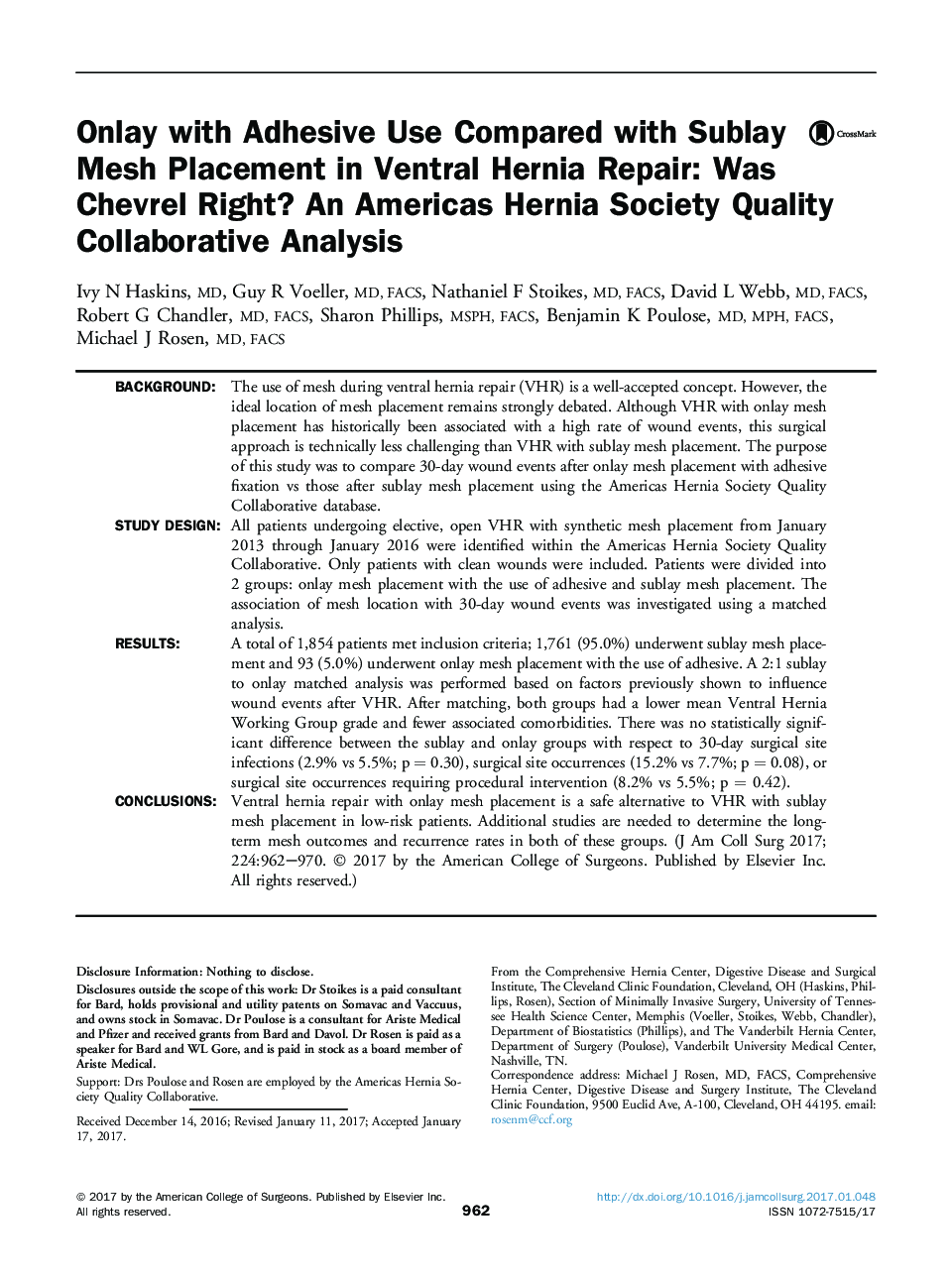| کد مقاله | کد نشریه | سال انتشار | مقاله انگلیسی | نسخه تمام متن |
|---|---|---|---|---|
| 5733019 | 1612192 | 2017 | 9 صفحه PDF | دانلود رایگان |
BackgroundThe use of mesh during ventral hernia repair (VHR) is a well-accepted concept. However, the ideal location of mesh placement remains strongly debated. Although VHR with onlay mesh placement has historically been associated with a high rate of wound events, this surgical approach is technically less challenging than VHR with sublay mesh placement. The purpose of this study was to compare 30-day wound events after onlay mesh placement with adhesive fixation vs those after sublay mesh placement using the Americas Hernia Society Quality Collaborative database.Study DesignAll patients undergoing elective, open VHR with synthetic mesh placement from January 2013 through January 2016 were identified within the Americas Hernia Society Quality Collaborative. Only patients with clean wounds were included. Patients were divided into 2 groups: onlay mesh placement with the use of adhesive and sublay mesh placement. The association of mesh location with 30-day wound events was investigated using a matched analysis.ResultsA total of 1,854 patients met inclusion criteria; 1,761 (95.0%) underwent sublay mesh placement and 93 (5.0%) underwent onlay mesh placement with the use of adhesive. A 2:1 sublay to onlay matched analysis was performed based on factors previously shown to influence wound events after VHR. After matching, both groups had a lower mean Ventral Hernia Working Group grade and fewer associated comorbidities. There was no statistically significant difference between the sublay and onlay groups with respect to 30-day surgical site infections (2.9% vs 5.5%; p = 0.30), surgical site occurrences (15.2% vs 7.7%; p = 0.08), or surgical site occurrences requiring procedural intervention (8.2% vs 5.5%; p = 0.42).ConclusionsVentral hernia repair with onlay mesh placement is a safe alternative to VHR with sublay mesh placement in low-risk patients. Additional studies are needed to determine the long-term mesh outcomes and recurrence rates in both of these groups.
Journal: Journal of the American College of Surgeons - Volume 224, Issue 5, May 2017, Pages 962-970
